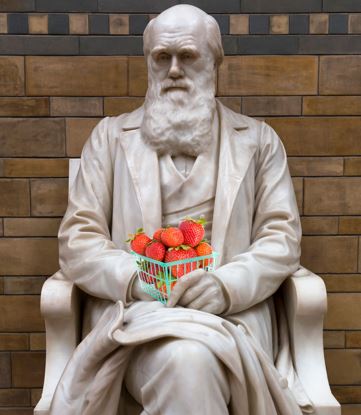What does Charles Darwin have in common with the fresh food industry? Boiling down evolutionary theory to its basics, those that adapt survive. Those that don’t, well….
In a new white paper from Transworld Data, Mary Shacklett references the tale of three companies, Netflix, Blockbuster and Red Box, who have all taken different approaches to the entertainment content market. Not much more than a decade ago, Blockbuster dominated the movie and media content market, having over 9,000 stores at its peak. Meanwhile, Netflix a small DVD by mail company, had steadily been rising in popularity since it was founded in 1997. Slowly Netflix ate away at Blockbuster’s business but soon moved to streaming content, the next frontier of content disruption. Netflix shifted its business model in order to adapt to changing technologies and customer preferences. Alas, Blockbuster did not adapt and there is now only one Blockbuster store left (in Bend, Oregon).
Then Red Box also emerged, seeing a niche market opportunity for popular titles people wanted to rent quickly and watch on their DVD players on a whim. This business model significantly reduced overhead by using automated kiosks instead of expensive storefronts to offer products.
A Lesson to be Learned
For the fresh food industry, there’s a lesson to be learned here.
For years the fresh food industry has been relatively stable. Customers went to their local grocery store or supermarket once or twice a week and made their purchases. The model wasn’t broken so why fix it? However, the fresh food industry has begun to transform due to technological disruption and changes in customer preferences, much like the movie content industry:
- Amazon bought Whole Foods and has begun to merge the brick-and-mortar and digital experience and brings massive buying power to reduce prices. New low-price competitors offering limited SKUs but better prices have emerged. Large national retailers responded by cutting prices, further squeezing already tight margins.
- Customers buying preferences have transformed. The advent of online shopping, click-and-collect and meal kits are further altering the dynamics of where and when people shop.
- Freight costs are rising rapidly due to new ELD requirements and an increasing shortage of drivers.
The evolution of the fresh food industry has resulted in margins getting tighter and tighter with fierce competitive battles. In this environment, doing things the old way runs the risk of companies getting left behind with ineffective legacy systems and outdated strategies that don’t meet current market demand. We’ve already seen bankruptcies in the food industry. We may see more.
The Fresh Food Industry: Optimizing Profit Margins
In her paper Optimizing Profit Margins in a Changing Retail Industry, Ms. Shacklett states that the fresh food industry must respond strategically and operationally to grow their businesses. One area she focuses on is optimizing the fresh food industry supply chain. She discusses three steps that businesses should take to succeed and get away from historical budget practices such as factoring in an automatic loss associated with wasting fresh product:
- Examine the farm-to-table fresh food supply chain and target those areas in the supply chain that contribute the most profit “bleed.”
- Outline a series of steps that retail grocers can take to eliminate these holes and improve supply chain performance.
- Examine how to build brand value by capitalizing on natural strengths and innovations.
Her white paper examines each step from farm to transportation to warehousing and covers off several areas for potential improvement. Ms. Shacklett concludes with this:
Understanding and proactively preventing food waste before it occurs benefits any food distribution and retail strategy, whether it is brick and mortar, e-commerce, direct from farm to home, or any other combination. Retailers can also build on the many years of expertise they already have in brick and mortar food distribution cold chains — a discipline that their online competitors are still learning — given their limited experience with the brick and mortar retail market.
End-to-end track and trace that is powered by Internet of Things sensor technology, food freshness grading, and secure transaction logging of every event that occurs in the fresh food supply chain, provides grocery retailers a visible and measurable way that they can work with all of their suppliers to enhance on-time, most-fresh performance and reduce waste.
Collectively, these techniques improve product profit margins. Just as significantly, they build consumer faith in your brand, and that’s priceless.
By the way, the approach Ms. Shacklett outlines also benefits growers and distributors, not just e-commerce or brick-and-mortar retailers. A healthy and well-functioning fresh food industry supply chain benefits all of its members.
Download a copy of the Transworld Data white paper.


